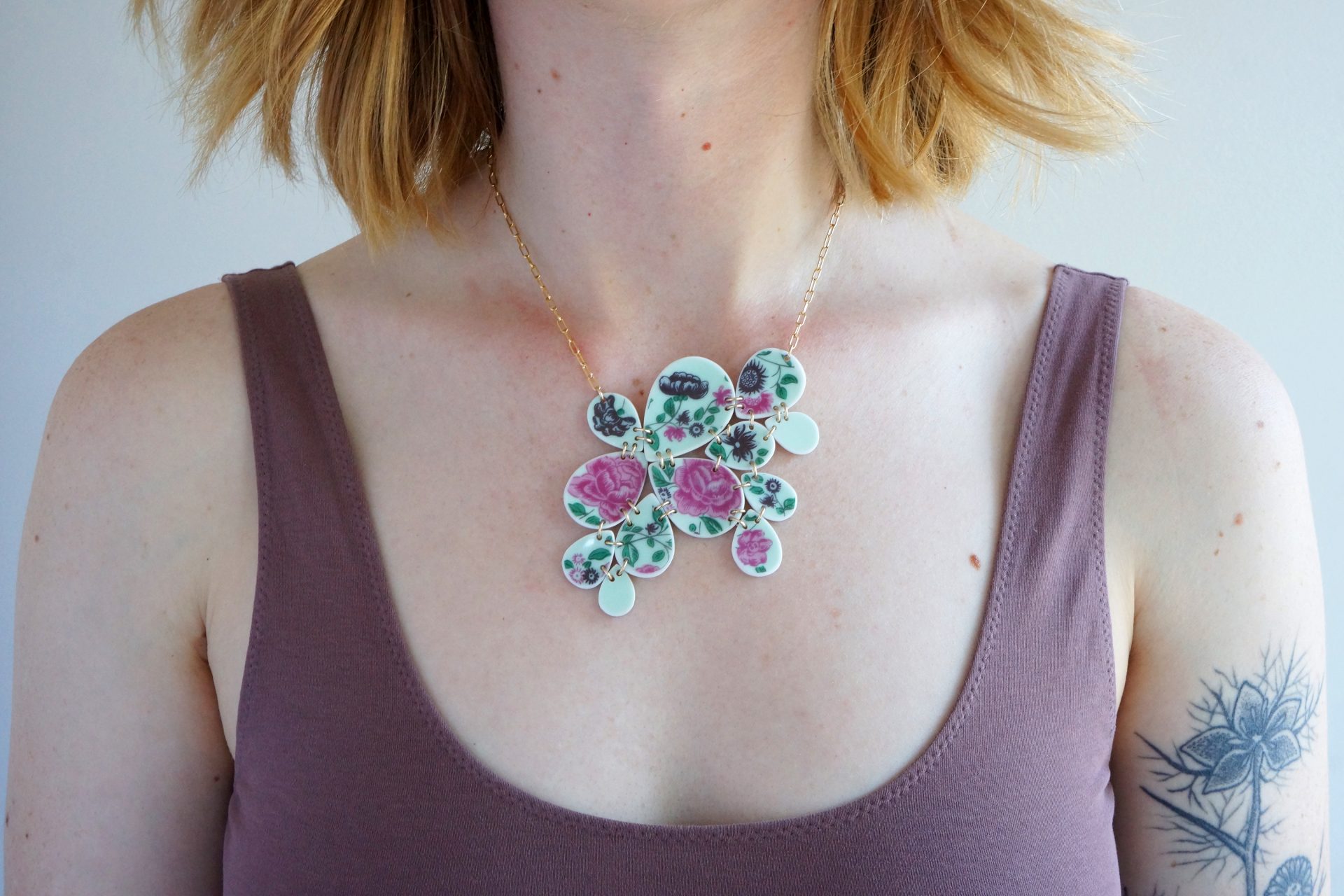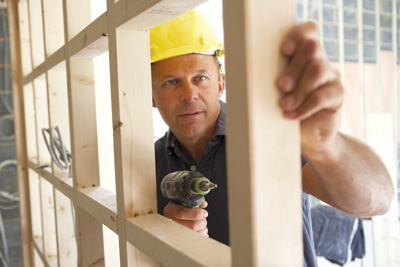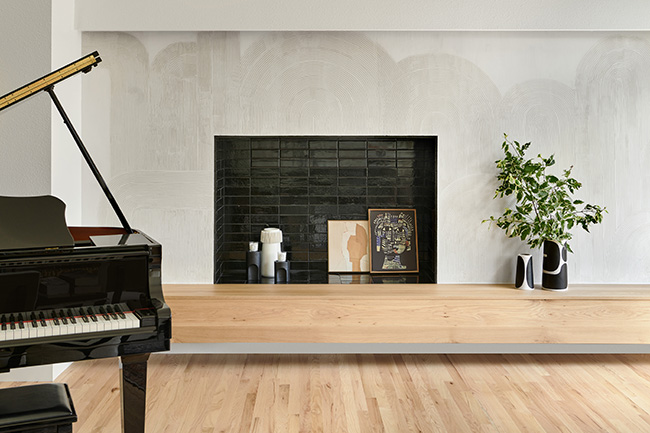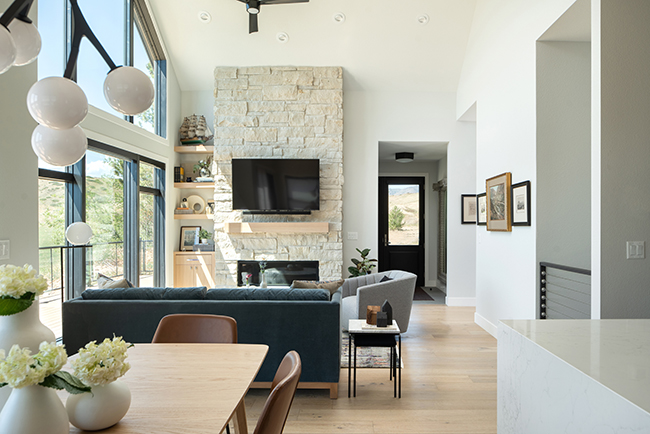Fruitful Facts
22 Sep 2012
Fall is the ideal time to plant fruit trees.
Here’s what you need to know if you want them to grow successfully.
By David Wann The best time to plant a fruit tree is 15 years ago,” one saying goes, “and the second-best time is now.” With that in mind, I volunteered to help plant a small orchard beside our community garden a few years ago. A few hands-on lessons I’ve learned—some bitter, some sweet—might help you establish fruit trees in your yard.
By following a handful of essential guidelines in choosing, planting, fertilizing and training new fruit trees, you can prevent disease and insect damage later on. In a couple of years, you’ll begin to get tangible yields that are consistently inconsistent—in keeping with Colorado’s lamb-and-lion springs.
Front Range friends with mature fruit trees predict we’ll get plums and tart cherries almost every year if the weather cooperates, and if overly heavy yields were thinned the previous year to prevent tree exhaustion. Established apple trees should bear at least every other year, they say, and peaches more like every third year. But these results are far from automatic.
To get these semi dependable fruit yields, there’s a lot of methodical work to be done during and after planting. Although there’s a 382-year-old pear tree in Massachusetts that still bears fruit, Front Range orchardists should focus on just keeping their trees healthy through the critical first three years.
The best time to plant a fruit tree is 15 years ago,” one saying goes, “and the second-best time is now.” With that in mind, I volunteered to help plant a small orchard beside our community garden a few years ago. A few hands-on lessons I’ve learned—some bitter, some sweet—might help you establish fruit trees in your yard.
By following a handful of essential guidelines in choosing, planting, fertilizing and training new fruit trees, you can prevent disease and insect damage later on. In a couple of years, you’ll begin to get tangible yields that are consistently inconsistent—in keeping with Colorado’s lamb-and-lion springs.
Front Range friends with mature fruit trees predict we’ll get plums and tart cherries almost every year if the weather cooperates, and if overly heavy yields were thinned the previous year to prevent tree exhaustion. Established apple trees should bear at least every other year, they say, and peaches more like every third year. But these results are far from automatic.
To get these semi dependable fruit yields, there’s a lot of methodical work to be done during and after planting. Although there’s a 382-year-old pear tree in Massachusetts that still bears fruit, Front Range orchardists should focus on just keeping their trees healthy through the critical first three years.
Tree Talk
Before planting, consider what type of fruit you want and whether those trees will thrive here. Then select disease-resistant, cold-hardy cultivators whose blossom times overlap to provide cross-pollination as needed. For example, the semi dwarf apple trees in our little orchard—Gala, Cortland, Sweet Sixteen and Honeycrisp—are all self-sterile, meaning they need to share pollen with one other. So we chose four mid season bloomers to help finesse spring frosts and freezes, yet still reach fall maturity. All four varieties are capable of surviving an occasional 25˚ F below zero, and each is relatively resistant to fire blight and powdery mildew. Peach trees are a different matter. With few exceptions, they self-pollinate, but bloom early and are often damaged when temperatures plummet lower than 10˚ F below zero. We planted Reliance and Red haven peach cultivators because they are both cold hardy and moderately disease resistant. In addition, Red haven ripens later than Reliance, so we have an extended peach season. Two self-fertile, semidwarf Stanley plum trees have given consistent, almost annual yields, as have the Montmorency cherry trees, much to the delight of neighborhood birds. Keeping cherry trees shorter with educated pruning is a definite advantage, because we can get tree nets over them to keep the birds at bay. Bunching and tying the nets at the bottom irritates the robins, because they much prefer fresh cherries to homemade pie! But a word of caution: Only use mesh netting you can’t poke a finger through; if you can get your finger through it, wildlife can become entangled in it. We've planted both mail-order bare-root fruit trees and container fruit trees raised by local nurseries. Each has advantages: Bare-root trees are less expensive and often begin to bear fruit sooner, but locally grown trees are already used to the Colorado climate, and when a knowledgeable nursery grows them, they have root stocks appropriate for our conditions.
In either case, you’ll want a tree that is at least a year old, 4 to 5 feet tall, with a straight trunk approximately ½- to ¾-inches in diameter.
We've planted both mail-order bare-root fruit trees and container fruit trees raised by local nurseries. Each has advantages: Bare-root trees are less expensive and often begin to bear fruit sooner, but locally grown trees are already used to the Colorado climate, and when a knowledgeable nursery grows them, they have root stocks appropriate for our conditions.
In either case, you’ll want a tree that is at least a year old, 4 to 5 feet tall, with a straight trunk approximately ½- to ¾-inches in diameter.
Planting Plans
Plant bare-root trees in the ground in mid- or late fall so they’ll get a head start and make good growth the following spring. Plant container-grown trees in spring or early fall to avoid the summer’s heat right after transplanting, which is a very stressful time for trees. Choose a site with well-drained soil, then fill a 1-foot-deep test hole with water to make sure it drains within a half hour or so. The ideal location for fruit trees would be an eastern exposure that gets at least 6 hours of sunlight. Trees that are planted on a slope will usually experience less frost damage. Peach, nectarine and apricot trees benefit from a site near a heat-radiating house to minimize winter damage. Space semi dwarf trees 10 to 15 feet apart in neat irrigation- and pollination-friendly rows. Dig a hole at least twice as wide as the root ball, loosening the soil beneath it to a depth of 2 feet. Don’t be squeamish about unraveling the roots of a container-grown tree; if thick roots wrap all the way around the ball, carefully spread them out and prune them by a third to stimulate growth. Spread the roots of a bare-root tree evenly over a cone of soil. To get the tree off to a good start, mix a gallon or so of compost into the hole and a cup of bone-meal or rock phosphate. Make sure the tree’s graft connection is 3 inches or so above the soil line. Soak the tree roots with about 10 gallons of water and create a ring of “power mulch” around the tree under its drip line (the branches and leaves that reach farthest from the trunk, which catch and release the most rainwater). A good organic mulch formula, applied twice a year in early March and mid-June, might include a 2-inch-thick mixture containing 5 shovels of decomposed leaves; 5 shovels of garden compost; 5 shovels of peat moss; 1 cup bone-meal; ¼ cup rock phosphate; ¼ cup alfalfa meal or pellets; and ¼ cup kelp or green-sand.Protection Plans
Once you’ve researched, bought and planted your trees, protect them with preventive devices. If you live in deer territory, for example, build munch-proof fences around each tree (or the whole orchard). Enclosures should be 7 feet tall to keep out their long necks. To prevent mice and voles from nibbling on the tender trunks, put a mouse-guard collar made of sheet metal or sections of quarter-inch burlap mesh around the base of each tree. Wrap each tree in paper or reusable plastic to help them avoid winter sun-scald cracks from moisture freezing and thawing in the tree. Apply the wrap in November and take it off in April. Securely stake trees, and remove any plastic or wire labels that could girdle the tree (it happened to me).Training Trees
When I planted my first fruit trees a few years ago, I told the neighbors, “Let’s just get them established and learn about pruning later.” That was a mistake. As horticulture maestro James Feucht explains, “Young trees that are neglected will later require removal of large branches, opening the tree to infectious disease organisms. Neglected trees also suffer more damage from fruit load and storm breakage than properly trained trees.” If you want your tree to remain a semidwarf (10 to 12 feet tall), the time to prune a bare-root “whip”—or sapling—is right after planting. “Remove the top of the whip about a quarter-inch above a bud that is located approximately 30 to 36 inches above the soil line; this will cause branching,” Feucht says. The pruning treatment is different for container-grown trees: Remove only dead or broken branches until the tree’s roots are established, leaving as much healthy growth as possible the first year to provide foliage for food production. In the second year, just before the buds open in late winter or early spring, prune the young container-grown tree so the branches will be strong enough to bear heavy fruit loads, and so sunlight can reach all branches of the tree.Beyond the First Years
 Once your trees are off to a solid start, research annual pruning, fertilization, watering, insect control and disease strategies. See “Resources” on the opposite page to help your expertise grow along with your trees.
I strongly recommend a drip-irrigation system to water trees. It saves water by reducing evaporation and by watering directly at the root zone. And you can set it on a timer when you’re away from home.
With fruit trees, as with the human body, an ounce of prevention is worth a bushel of apples, which help keep the doctor away. Good luck!
Once your trees are off to a solid start, research annual pruning, fertilization, watering, insect control and disease strategies. See “Resources” on the opposite page to help your expertise grow along with your trees.
I strongly recommend a drip-irrigation system to water trees. It saves water by reducing evaporation and by watering directly at the root zone. And you can set it on a timer when you’re away from home.
With fruit trees, as with the human body, an ounce of prevention is worth a bushel of apples, which help keep the doctor away. Good luck! 











